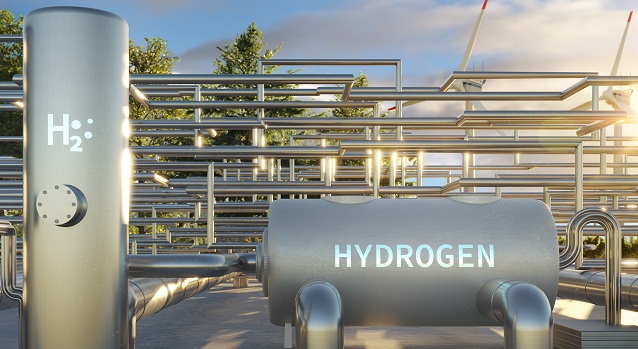Hydrogen as a panacea?
Directional certainty for key decisions on alternative transformation paths - INSIGHTS for policymaking.
Green hydrogen has almost achieved the status of a “panacea” in the energy policy debate. But the diversity of possible customers leads to ambiguities. The project examined the question of how directional certainty can be created here.
The Federal Government’s National Hydrogen Strategy shows the great importance attached to hydrogen (H2) as an energy carrier. Strategy papers of different actors are characterized by considerable technological optimism that green hydrogen can make a central contribution to climate protection and energy policy.
The starting point of the H2A? project was the observation that there is currently a massive “overbooking” of green hydrogen by a large number of sectors. This potentially leads to climate targets not being met and there could be negative impacts on alternative transformation pathways.
Directionality in hydrogen policy
Based on interdisciplinary transformation research and broad stakeholder participation, H2A? addressed the following questions:
- What is the importance of directional certainty in H2 policy, policy mixes and actor strategies?
- How does certainty of direction emerge?
- What is the role of science in this process?
H2A? has provided INSIGHTS for key political decisions on viable transformation paths.
The H2A? project was based on insights from interdisciplinary transformation research and the findings of the ITA project Governance of Radical System Innovations (Go) on the importance of directional certainty for the successful transformation of energy, industry and mobility systems.
Achieving climate targets with hydrogen?
The H2A? project has identified current and planned development paths for hydrogen use in the fields of industry, heating, electricity and transport. These were analyzed in terms of their interactions with other technologies and the availability of green hydrogen.
The basis for this is an estimate of the extent to which the intended use in the aforementioned fields of application exceeds the expected possible production and imports of green hydrogen over time.
The findings of the project were made available to the specialist public in the form of contributions to specialist conferences and publications in peer-reviewed journals. Selected content was prepared in the form of policy papers and social media contributions for stakeholders in politics, business, administration, associations and civil society.
Only use hydrogen where it is indispensable
The disparity between potential future demand and potentially available supply makes it necessary to prioritize hydrogen applications politically. In order to achieve a high level of security of supply and the lowest possible costs of final energy in the developing hydrogen economy, it is important to use hydrogen first where it is indispensable or where it promises particularly great ecological and economic advantages.
Based on the findings on the climate policy risks of establishing a blue hydrogen economy, we believe it is necessary to make a clear decision on the direction to take with regard to the exclusive production and import of green hydrogen.
Hydrogen in the heat supply is an expensive dead end
It was also shown that there are clear findings in the scientific literature on the usefulness of using hydrogen in certain applications. According to current figures and calculations, the use of hydrogen in decentralized heat generation, for example, will not only foreseeably “play a rather subordinate role” (BMWK, 2023, p. 24), but is already an expensive dead end today.
Keeping open the option of converting natural gas distribution grids for hydrogen transport to decentralized heat generation systems in private households and small businesses or installing and maintaining H2-ready heating systems may initially appear to be a cost-neutral flexibility strategy, but they are clearly associated with costs and risks.
Hydrogen in the heat supply is an expensive dead end
It was also shown that there are clear findings in the scientific literature on the usefulness of using hydrogen in certain applications. According to current figures and calculations, the use of hydrogen in decentralized heat generation, for example, will not only foreseeably “play a rather subordinate role” (BMWK, 2023, p. 24), but is already an expensive dead end today.
Keeping open the option of converting natural gas distribution grids for hydrogen transport to decentralized heat generation systems in private households and small businesses or installing and maintaining H2-ready heating systems may initially appear to be a cost-neutral flexibility strategy, but they are clearly associated with costs and risks.




